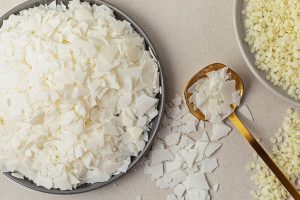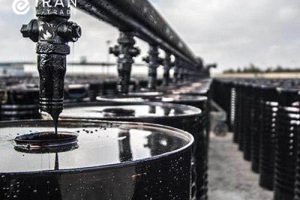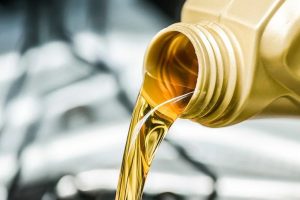What is Petroleum Coke: Types + Applications
What is petroleum coke? Petroleum coke is a solid, porous, carbon-rich material produced from the refining of heavy crude oil. This byproduct of the refineries plays a crucial role in the metallurgical, chemical, and energy industries. Due to its high carbon content, low ash, and favorable physical properties, petroleum coke serves as fuel, a carbon source, and a raw material in the production of industrial products. Furthermore, petroleum coke comes in various types, including green, calcined, needle, sponge, and graphite coke. Additionally, depending on the production method and quality, it can either replace traditional fuels or serve as an industrial carbon source.
Therefore, in this article from the Iran ETrade blog, we will explain what petroleum coke is and what its characteristics and applications are. Iran Etrade is the official website for petroleum product pricing, where you can inquire prices for export bitumen and other products.
What is petroleum coke?
Petroleum coke is a grayish-black solid carbon material obtained from the distillation of crude oil. It has a porous texture and is usable across various industries.
What is petroleum coke, and why is it important? Petroleum coke is a by-product of crude oil and forms through the thermal decomposition of heavy hydrocarbons in oil. It is a solid material with high carbon content and low moisture, derived from low-ash, low-sulfur bituminous coals.
Industries often use it as an alternative to traditional fuels such as coal. Also, the uses of petroleum coke vary depending on its type and quality, and it comes in several forms.
What is the difference between metallurgical coke and petroleum coke? Metallurgical coke is produced by burning coal, whereas petroleum coke is obtained from the distillation of crude oil. In addition, petroleum coke has a higher calorific value and a greater absorption rate compared to metallurgical coke.
Furthermore, its lower ash content makes it more suitable for certain industrial applications, including electrode production and metallurgical processes.
What Is Petroleum Coke Production History?
The production of petroleum coke started in the 1920s, and with the growth of the steel and aluminium industries, its use as a carbon source and industrial fuel expanded. China, the United States, and India are among the main producers of petroleum coke in the world.
Petroleum coke is a solid, carbon-rich material produced from the refining of heavy crude oil, and is usable in the metallurgical, chemical, and energy industries. It has various types, including graphite coke, sponge coke, and calcined coke. It also serves as fuel, a carbon source, and an industrial raw material. Furthermore, different types of petroleum coke are produced by using methods such as asphaltene, delayed coking, and fluid coking. As a result, petroleum coke products possess properties like high thermal resistance, good electrical conductivity, and high calorific value.
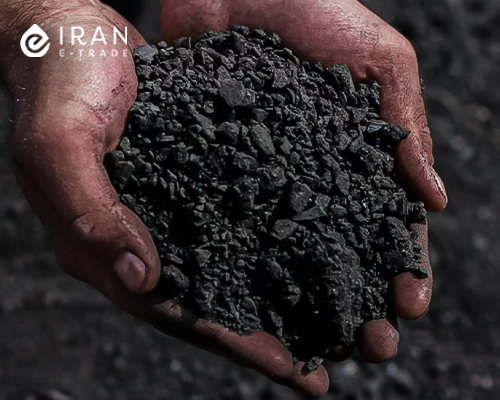
What Are The Physical And Chemical Properties of Petroleum Coke?
Types of petroleum coke with high thermal resistance and significant absorption capacity are ideal for industrial applications.
Petroleum coke possesses unique physical and chemical properties that make it suitable for industrial use. Its appearance can vary, taking forms such as needle, sponge, or spherical shapes. Furthermore, different Petroleum coke types have high thermal resistance, allowing them to operate under very high-temperature conditions.
Their molecular weight ranges from several hundred to millions. The high absorption capacity of petroleum coke also gives it a strong ability to capture impurities present in crude oil.
Physical and Chemical Specifications of Petroleum Coke
| Properties of petroleum coke | Approximate amount | Description |
|---|---|---|
| Appearance and color | Black and shiny | A solid material with a porous surface |
| Density | 1.4 to 1.6 g/cm³ | Depends on the type of crude oil and the production method |
| Fixed carbon | Over 90% | Basis for calorific value and reducing property |
| Sulfur | 0.5 to 7% | Key factor in final quality and price |
| Hydrogen | 2 to 4% | Part of the residual compounds |
| Nitrogen | Less than 2% | Minimal effect on overall quality |
| Mineral matter (ash) | 0.5 to 1.5% | Inorganic residue after combustion |
| Electrical conductivity | High | Used in anode and electrode manufacturing |
| Thermal resistance | Very high | Stability at high industrial temperatures |
Advantages and Disadvantages of Using Petroleum Coke
Petroleum coke has a high calorific value and good electrical conductivity, and is cheaper than coal. However, its pollutant emissions and environmental impacts pose challenges.
What is petroleum coke’s advantages and disadvantages? While petroleum coke offers significant benefits, it also has limitations and drawbacks that must be considered.
Advantages:
- Easy access from refineries, which reduces supply costs.
- High calorific value due to high carbon concentration and compact structure.
- Lower price compared to coal.
- Good electrical conductivity, enabling its wide use in anode and electrode production.
Disadvantages:
- Emission of pollutants such as sulfur and heavy metals.
- Environmental impacts, including intensified acid rain and increased air pollution.
- Dependence of the steel and aluminium industries on petroleum coke, which can cause disruptions if supply is limited.
Types of Petroleum Coke
Petroleum coke comes in various types based on its composition, appearance, and production method. For instance, petroleum coke might be needle, green, delayed, graphite, and thermoplastic coke, and each has its specific applications.
Types of petroleum coke are categorized according to their composition, appearance, chemical properties, production method, and applications. Below, we will explore the different classifications of petroleum coke.
1. Classification of Petroleum Coke by Composition
What is petroleum coke’s classification by composition? Raw petroleum coke is divided into four types based on its composition: conventional coke, graphite coke, semi-graphite coke, and thermoplastic coke.
What Is Petroleum Coke In Its Conventional Form?
This type of petroleum coke is produced from crude oil residue, has good mechanical strength, and is usable in steel and aluminium production.

Graphite Petroleum Coke
It contains a high amount of graphite and has strong chemical resistance. Therefore, its uses are in graphite electrode production and steelmaking.
Semi-Graphite Petroleum Coke
The graphite content in this type of petroleum coke is lower than in graphite coke, and it is applicable as an intermediate material in steel production.
Thermoplastic Petroleum Coke
Graphite coke is suitable for electrode production and steelmaking. However, thermoplastic coke, with its plastic-like properties, is suitable for use in the polymer and plastic industries.
What is petroleum coke type of thermoplastic? Another type of petroleum coke, based on composition, is thermoplastic coke. This coke has plastic characteristics and has uses in the plastic and polymer industries as a base material.
2. What Is Petroleum Coke Classification by Physical Form
Based on its physical form, petroleum coke types include sponge, needle, and spherical coke.
Sponge Coke
Sponge coke has a porous and lightweight structure, making it suitable for producing electrodes and dense carbon products. This type of coke is produced from a mixture of aromatic and aliphatic hydrocarbons.
Needle Coke
Needle coke has a long, thin, needle-like shape. Also, its properties make it ideal for graphitization and metallurgical processes because it has high mechanical strength. This type of coke is produced from petroleum feedstocks with a high molecular weight of aromatic hydrocarbons.
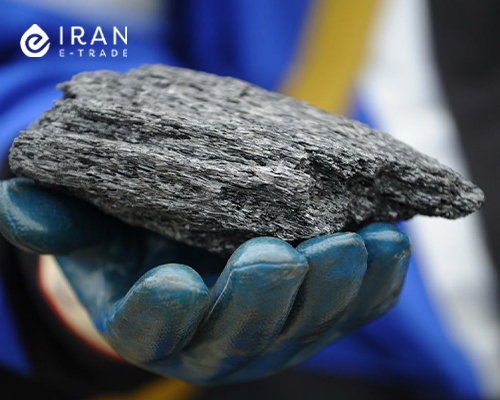
Spherical Coke
What is petroleum coke in its spherical form? Spherical coke is a type of petroleum coke that, due to its round and spherical shape, is easy to transport and store. Its main uses are for pigment production and as industrial fuel.
3. What Is Petroleum Coke Classification by Production Method?
Raw petroleum coke is divided into two categories based on the production method: delayed coke and contact coke.
Delayed Coke
Another type of petroleum coke is delayed coke, which is produced through slow and controlled heating at lower temperatures and higher pressure compared to contact coke. Its high-quality product makes it suitable for metallurgical industries and electrode production.
Contact Coke
This type of coke is produced through direct contact with steam and heat and is often suitable for producing high-purity metallurgical coke. This method reduces impurities and improves the final quality of the coke.
4. What Is Petroleum Coke Classification by Application?
What is petroleum coke classification by its use? The next classification of petroleum coke is based on its applications. Petroleum coke can be categorized into three types: fuel coke, metallurgical coke, and graphite coke.
Fuel Coke
Another type of petroleum coke is fuel coke, which is applicable as an industrial and thermal energy source in steelmaking furnaces, power plants, and other industries.
Metallurgical Coke
What is another application of petroleum coke? Metallurgical coke serves as a carbon source in the production of high-quality steel and aluminium and plays a vital role in oxygen-reducing processes and carbon supply.
Graphite Coke
Another use of petroleum coke is in graphite production. Graphite coke is a high-purity product used for producing electrodes and carbon products.
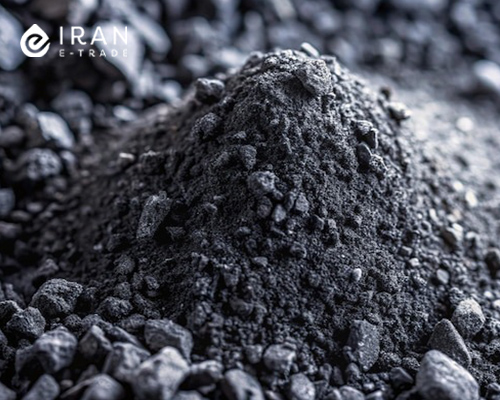
5. Classification of Petroleum Coke by Production Method and Physical Form
What is petroleum coke’s other classification? Calcined coke and green coke are types of petroleum coke categorized based on their physical form and production method.
Green Petroleum Coke
Another type of petroleum coke is green coke. Green coke is the raw coke, or the primary product of coking. It has hard, porous grains with irregular shapes. It still contains its natural impurities and must be processed before use. Also, this coke is suitable for use as fuel and in metallurgical processes.
Calcined Petroleum Coke
Calcined coke is obtained by heating green coke at temperatures between 1200 and 1350°C. In this process, volatile materials are removed from its structure, resulting in a final product with a higher calorific value compared to green coke.
Calcined coke has wide usage in industries such as aluminium production, electrode manufacturing, and titanium dioxide pigment production.
What Is Petroleum Coke Production Process?
What is the application of petroleum coke? Petroleum coke is both an energy source and a component in the production of metals and chemicals.
In this section, we will examine the methods of producing petroleum coke. In general, petroleum coke is produced through three methods: asphaltene, delayed coking, and fluid coking.
1. Petroleum Coke Produced From Asphaltene
What is petroleum coke’s production method from asphaltene?
In this method, the manufacturers convert asphaltene-rich feedstocks containing sulfur and heavy metals into coke. The main use of this coke is for fuel, and it is less suitable for metallurgical applications.
2. Petroleum Coke by Delayed Coking Method
In this method, delayed coke is produced from the thermal reactions of vacuum residues and aromatic oils at temperatures around 480–500°C. Therefore, the resulting coke has a porous, sponge-like structure and is primarily used for fuel applications.
3. Petroleum Coke by Fluid Coking Method
In this continuous method, the manufacturers spray heated feedstock onto a fluidised bed of hot coke particles to form coke with a needle-like structure and high mechanical properties. Therefore, needle coke is good for manufacturing carbon electrodes in the steel and aluminium industries.
What Is Petroleum Coke Application And Use?
Petroleum coke is a source of fuel in power plants and factories, in aluminium and steel production. It is also useful for manufacturing electrodes and more.
The use of petroleum coke is common in various industries. Below, we will examine its main applications:
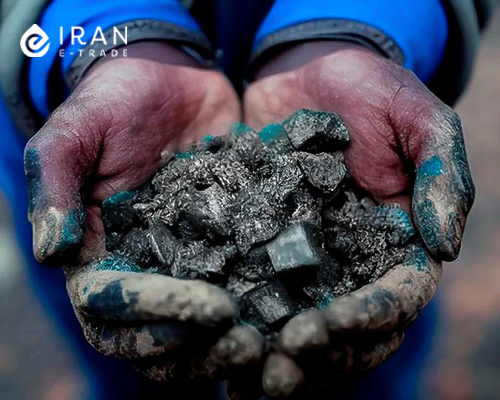
1. Petroleum Coke As An Energy Source And Fuel
What is petroleum coke’s use as an energy source? This petroleum product has a high calorific value, which allows it to be used as a substitute for coal and crude oil. In fact, various types of petroleum coke serve as energy sources and as fuel in power plants and factories.
2. Use In The Metallurgical Industry
The second use of petroleum coke is providing carbon for the production of aluminium, steel, and other metals, or for manufacturing electrodes needed in metal smelting furnaces.
3. What Is Petroleum Coke’s Chemical Use?
Petroleum coke is used in the production of chemicals such as synthetic graphite, catalysts, and carbon black.
4. Petroleum Coke in the Gasification Process
Another application of petroleum coke is in gasification, where it is converted into hydrocarbon gases and fuel gases.
5. Electrode Production
What is petroleum coke’s use in producing electrodes? Calcined coke is used to produce electrodes for electric arc furnaces.
6. Titanium Dioxide Pigment Production
Another use of petroleum coke is as an additive in the production of titanium dioxide pigment, where it helps improve the quality of the pigment.
7. What Is Petroleum Coke’s Use In The Steel Industry?
Petroleum coke is used as one of the main base materials in steel production. Due to its suitable thermal and mechanical properties, it is applicable as thermal electrodes in electric arc furnaces.
8. Use of Petroleum Coke in the Aluminium Industry
In the aluminium production process, petroleum coke serves as a base material and plays an important role in producing molten aluminium.
9. Use of Petroleum Coke in the Petrochemical Industry
What is petroleum coke’s use in the petrochemical industry? In the petrochemical industry, petroleum coke can be a catalyst and also a component for the production of various chemical materials.
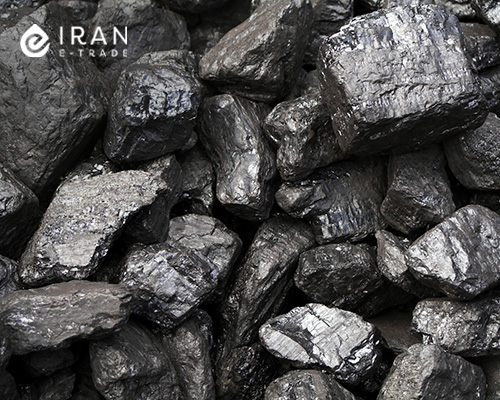
Coking Process
The coking process involves converting coal or petroleum materials into coke with high mechanical strength and calorific value.
Coking is the conversion of coal into coke to produce a material with sufficient strength, high calorific value, and low volatile content. Therefore, it can serve as both fuel and a reducing agent in blast furnaces. Below, we will explain the process of petroleum coke production.
Coking
In the coking unit, the prepared coal is charged into a special battery or cell. Then, under controlled temperatures and almost oxygen-free conditions, it undergoes several stages: moisture evaporation, release of hydrocarbons, transformation of plastic matter into semi-coke, and finally conversion into complete coke.
Coke Strength Determination Test
Determining the mechanical strength of coke before industrial use is important to ensure proper performance in production processes.
Coal Section
What is petroleum coke’s coal section in its’ production? In this stage, the mined coal is transported to the plant. Then the manufacturers remove unwanted metals. Afterwards, they size and blend the coal and control its moisture. Finally, the coal is prepared for charging into the coking ovens.
Coke section
The manufacturers prepared coal into the coking units. In these units, the coal undergoes a multi-stage process (moisture evaporation, hydrocarbon release, transformation into semi-coke, and finally complete coke).
Chemical Recovery And Refining Section
At this stage, the gases released from the coking process enter the recovery section, where compounds such as tar, ammonia, benzene, and others are removed or separated. The treated gas may then be used for the production of sulfuric acid, ammonium sulfate, or as internal fuel.
Chemical Composition of Coke
Coke contains a significant percentage of organic carbon, hydrogen, oxygen, and small amounts of sulfur and nitrogen. At higher temperatures, the volatile matter in coke is removed, resulting in a product with higher purity.
New Methods of Coke Quenching
What is petroleum coke’s quenching? Quenching coke with water causes significant heat loss. Therefore, the manufacturers have been developing new methods such as using inert gases (e.g., nitrogen) or using water with heat recovery (converting water into steam) to reduce this loss and preserve coke strength.
What Are The Grades of Petroleum Coke And How Is It Distributed?
Petroleum coke is sold in barrels for industrial applications and by the gram for laboratory use. Petroleum coke is offered in various grades based on customer requirements:
- Green petroleum coke
- Low-sulfur and high-sulfur coke
- Calcined coke
- Needle coke, delayed coke

Price of Petroleum Coke And Its Influencing Factors
What factors affect the price of petroleum coke? The grade of petroleum coke, its quality and sulfur content, global supply and demand, fluctuations in crude oil prices, environmental policies, and transportation costs all play a significant role in determining the price of petroleum coke.
For updated prices of bitumen and other petroleum products, you can visit the Iran ETrade website.
What Is The Risk of Purchasing Low-Quality Petroleum Coke?
Using low-quality coke can cause higher emissions of pollutants such as sulfur and carbon dioxide, which have negative environmental impacts. Additionally, reduced coke quality decreases production efficiency in the metallurgical and petrochemical industries.
Global Petroleum Coke Market
What is petroleum coke’s global market? The global petroleum coke market is growing due to increased demand in the steel and aluminium industries, and its market status is highly influenced by economic and environmental developments.
For instance, Middle Eastern countries, India, and the United States are major producers of petroleum coke, while China is the largest consumer.
Frequently Asked Questions
In this article from the Iran ETrade blog, we explained what petroleum coke is, how it is produced, and its advantages and applications. Now, we will answer a few common questions on this topic.
How Is Petroleum Coke Produced?
Petroleum coke is formed by heating the heavy fractions of crude oil through the calcination process.
Does Petroleum Coke Pollute The Environment?
If burned directly, petroleum coke produces pollutant gases. However, by following standards and using sustainable technologies and processes, its environmental impact can be reduced.
What Is The Application of Petroleum Coke in The Petrochemical Industry?
Petroleum coke is usable in the petrochemical industry for producing polymeric or chemical materials and also as a catalyst.
What Is The Application of Petroleum Coke In The Steel Industry?
One of the applications of petroleum coke in the steel industry is its use as a base material for metal smelting and steel production.
What Is The Use of Graphite Petroleum Coke?
What is petroleum coke in its graphite form? Graphite coke is useful for producing graphite electrodes in the aerospace and electronics industries, as well as in steelmaking and the production of carbon products.
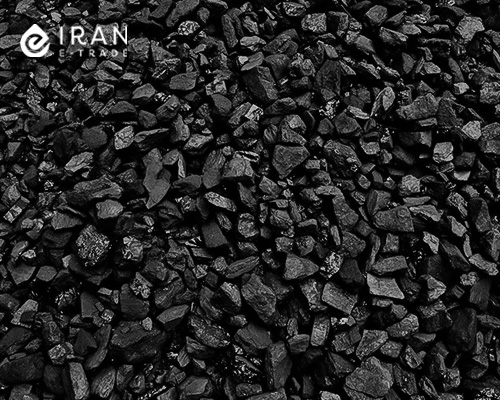
source: ektinteractive
Bitumen Price
- What Is LPG: Properties + Uses Liquefied Petroleum Gas
- What Is Petroleum Paraffin: Types + Properties And Applications
- What Is Mazut: Advantages, Applications + Hazards
- What Is Diesel fuel: Types Gas oil + Applications
- What is gasoline? Types + Uses and Production Process
- Export Bitumen Specifications: Requirements & Standards




